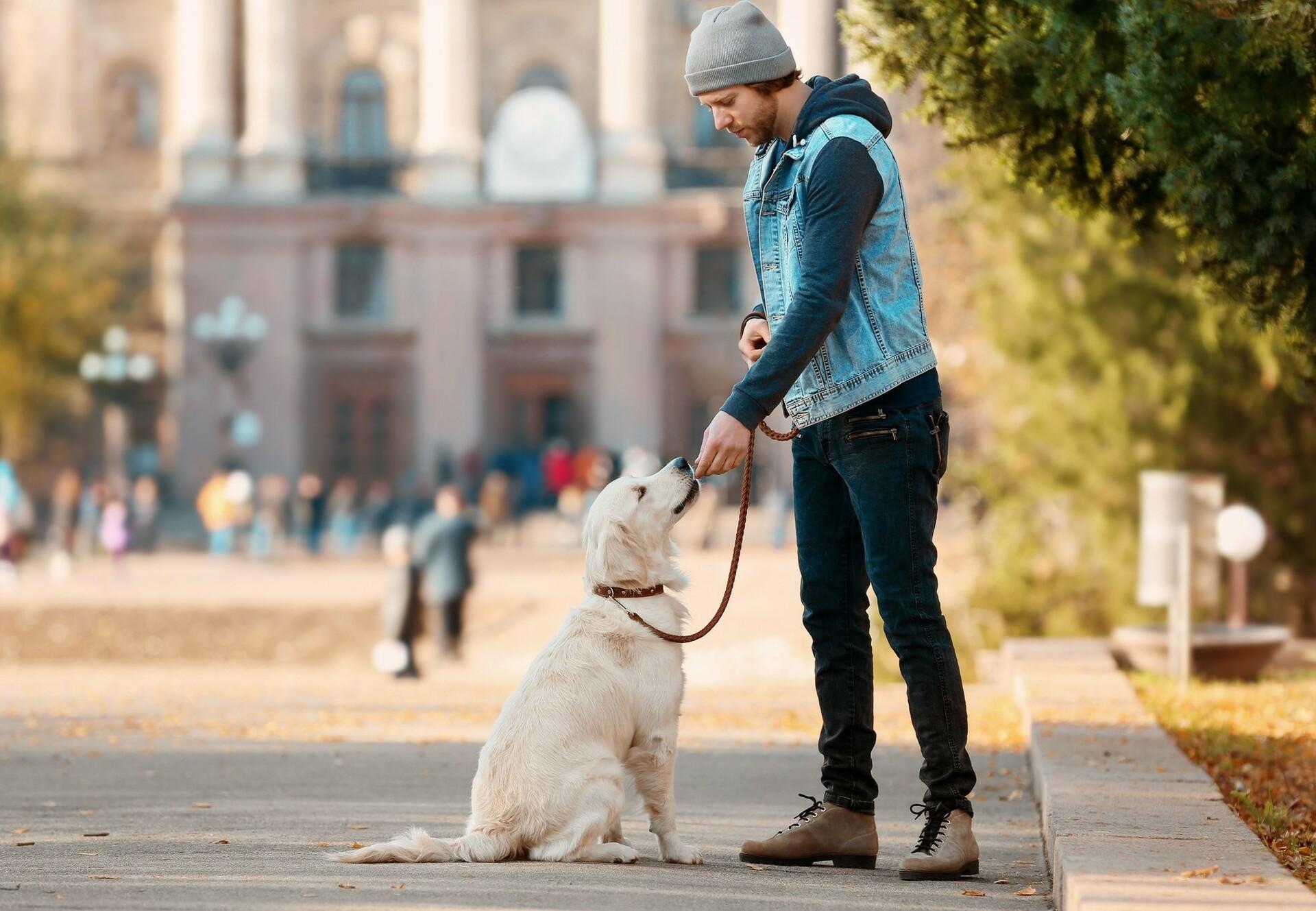
Positive dog training
Dogs learn best with positive reinforcement
Discussions about the best way to train your dog can become heated. There are many different opinions on the topic. Some rely on positive reinforcement and reward, others on dominance and punishment.
FOUR PAWS clearly recommends 'positive reinforcement' training methods for dog training. It is an animal-friendly training method, excluding all types of punishment.
What does positive reinforcement mean?
Reward-based training involves the use of rewards such as praise, treats and play to reinforce desired behaviours. In theory, the dog associates the behaviour it shows with positive emotions, leading to the dog displaying the behaviour more frequently. Unwanted behaviour is simply ignored. Furthermore, this approach supports a healthy and trusting human-animal bond.
An example of positive reinforcement
Pulling on the leash is a common problem when walking your dog. It is the aim that the dog walks on the leash without pulling. When the leash is held tight, it created an uncomfortable feeling for the dog – and of course for the owner. In order to change this unpleasant behaviour, it is absolutely not recommended to jerk on the leash. This causes even more discomfort in the animal and will, in the end, not bring the wanted result.
With positive reinforcement training, the times when the dog is not pulling on the leash are rewarded. Whenever the dog pauses, looks at its human, possibly even comes back the dog will be praised and rewarded. The reward can come in the form of praise, positive attention, pats or treats. In this way, the dog learns that if he pays more attention to his owner, he will be rewarded. That reinforces the positive behaviour more and more.

Why pain and domination doesn’t help
The positive reinforcement approach can, in some cases, take more time and effort for the person. However, it has a lasting good effect on the behaviour as well as the human-animal relationship.
If pain is inflicted on the dog during training, dogs will show more stress symptoms and are therefore find it difficult to learn in that state. Punishment is extremely counterproductive when exercising. As a result, the dog can develop a fear towards certain objects, people or situations. Studies show that punishment is linked to the person who causes it and is very stressful for the dogs. This has a negative effect on the relationship between dog and owner. It is all the more important to avoid pain and dominance when training dogs in order to build a close and good connection.
Do not use agonising training equipment
Training equipment that causes the dog any direct ‘pain’ should be avoided at all costs. An example would be a collar that triggers a stimulus (e.g. puff of air or sound) in the event of undesired behaviour, which the animal perceives as unpleasant. This kind of aversive equipment can cause stress for the dog and can be counterproductive for the training. The boundaries between what is painful or just uncomfortable for the dog are fluid and every dog perceives them differently.
Tips for difficult dogs
Each dog is individually shaped by its rearing, its genetics, its experiences in life and also by the environment.
As a dog owner, you have the responsibility to socialise and train your dog. Training is important so that the dog knows what is expected of him. Dogs often want to please, but if they don't know what is expected of them it becomes a stress factor.
We recommend seeking the help of experts in the event of problem behaviour. The challenges can be worked on in a good dog school or with a competent dog trainer. Even difficult behaviour can be improved by working positively with the animal.
 Please be careful! If you delete this page, consider that it could be used within an other language version.
Please be careful! If you delete this page, consider that it could be used within an other language version.
